Liquidation Report Samples
-

Company Liquidation Report
download now -

Monthly Liquidation Report
download now -

Petty Cash Liquidation Report
download now -
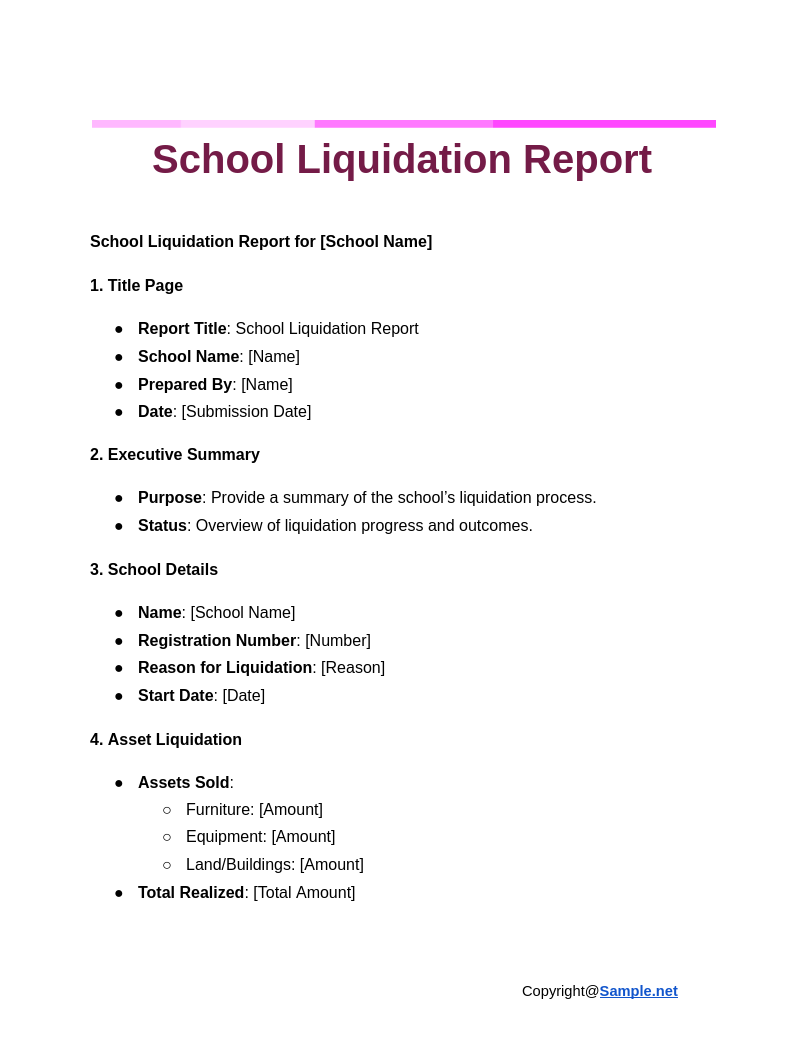
School Liquidation Report
download now -
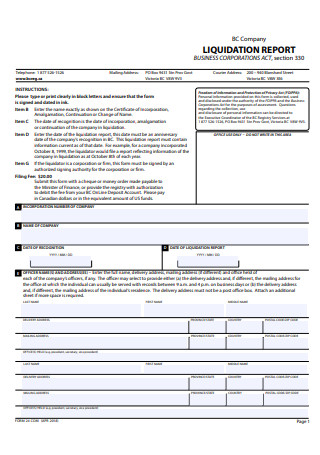
Liquidation Report Template
download now -
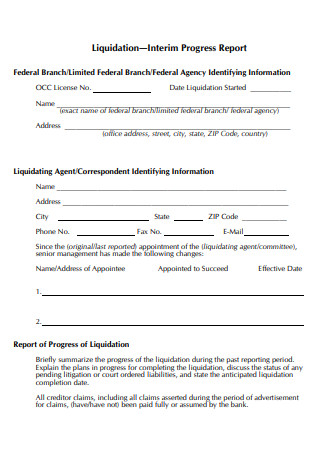
Liquidation Interim Progress Report
download now -
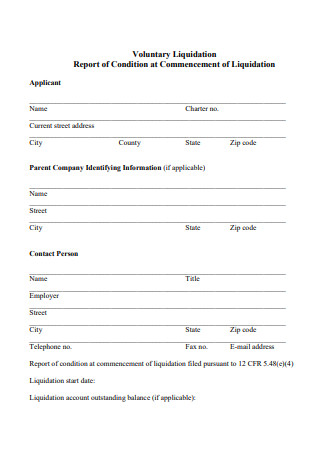
Voluntary Liquidation Report
download now -
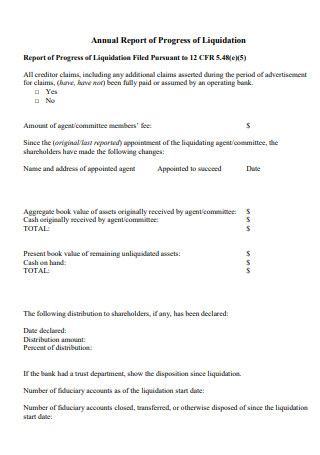
Liquidation Annual Report of Progress
download now -
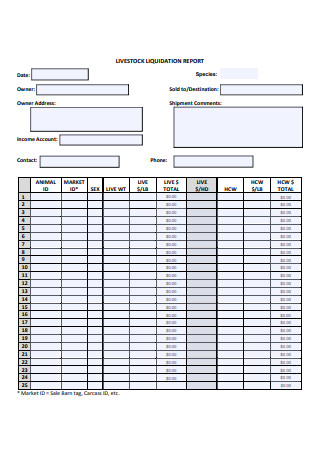
Livestock Liquidation Report
download now -
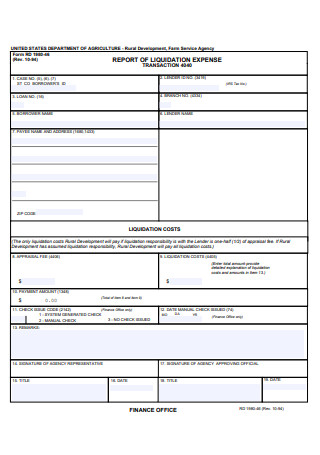
Liquidation Expense Report
download now -
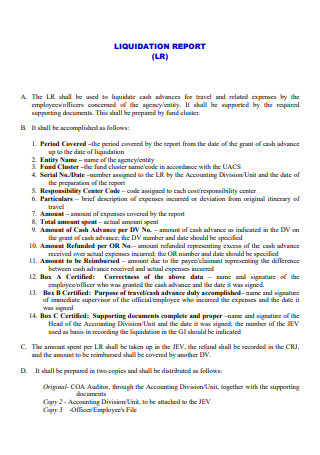
Basic Liquidation Report
download now -
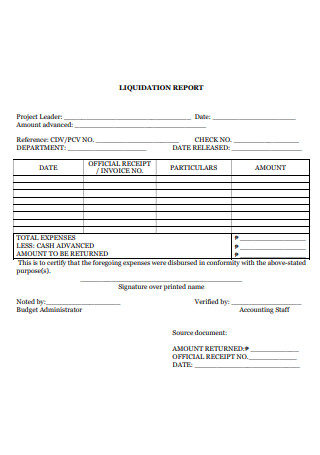
Formal Liquidation Report
download now -
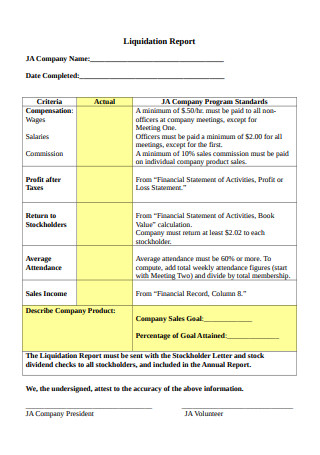
Liquidation Report Example
download now -
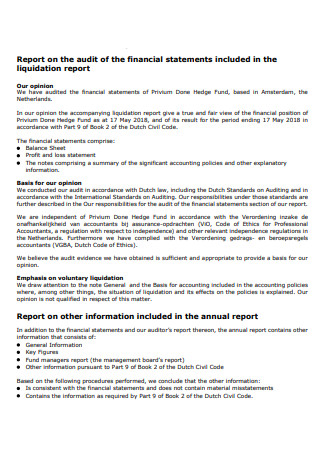
Liquidation Audit Report
download now -
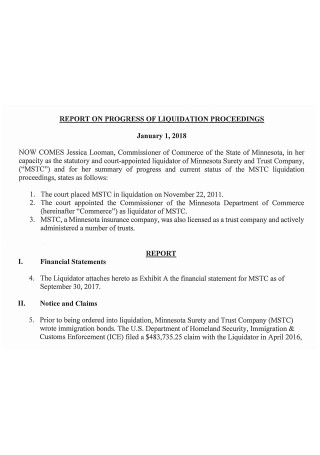
Liquidation Report on Progress
download now -
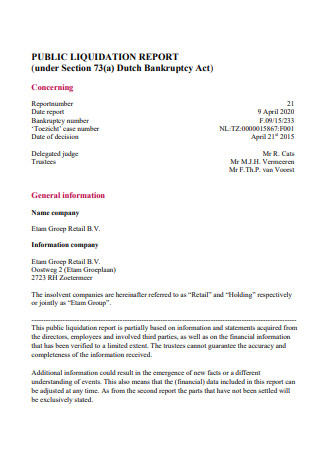
Public Liquidation Report
download now -

Voluntary Liquidation Final Report
download now -
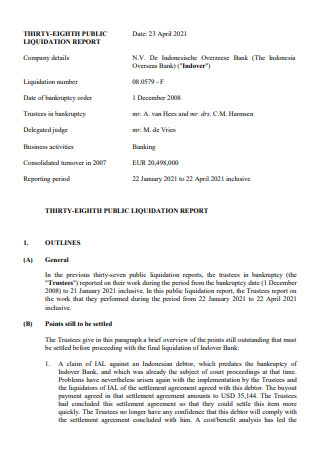
Liquidation Report in PDF
download now -

Liquidation Global Property Fund Report
download now -
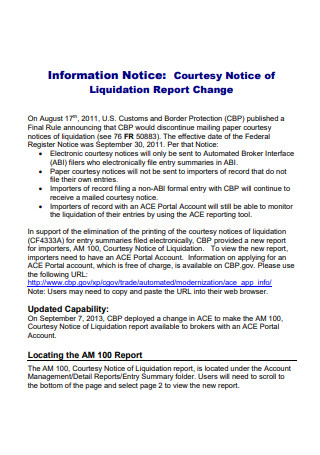
Sample Liquidation Report
download now -

Standard Liquidation Report
download now -
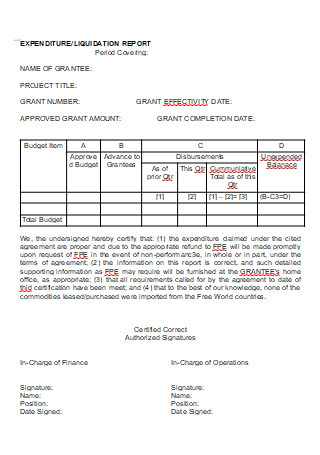
Expenditure Liquidation Report
download now -
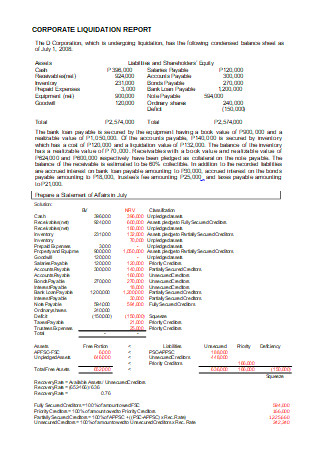
Corporate Liquidation Report
download now
FREE Liquidation Report s to Download
Liquidation Report Format
Liquidation Report Samples
What is a Liquidation Report?
Purposes of a Liquidation Report
How to Create a Liquidation Report
FAQs
How does a liquidation report differ from a financial statement?
What legal frameworks govern the preparation of a liquidation report?
How are creditors prioritized in a liquidation report?
What happens if creditors dispute the report?
Who approves a liquidation report?
Can a liquidation report be prepared for a solvent company?

Download Liquidation Report Bundle
Liquidation Report Format
1. Title Page
- Report Title: Liquidation Report for [Company Name]
- Prepared By: [Name of Liquidator/Organization]
- Date: [Date of Report Submission]
- Reference Number: [If Applicable]
2. Executive Summary
- Purpose of the Report: Provide an overview of the liquidation process.
- Summary of Findings: Briefly summarize key results, including total assets, liabilities, and final distribution to stakeholders.
- Outcome: State whether the liquidation process is complete or pending.
3. Background Information
- Company Details:
- Name: [Company Name]
- Registration Number: [Company Registration Number]
- Date of Incorporation: [Date]
- Reason for Liquidation: [Voluntary/Compulsory/Other Reasons]
- Date of Commencement of Liquidation: [Date]
4. Assets Realized
- Total Assets: List categories of assets and their total realizable value.
- Cash: [Amount]
- Receivables: [Amount]
- Inventory: [Amount]
- Fixed Assets: [Amount]
- Other Assets: [Amount]
5. Liabilities Settled
- Secured Liabilities: List and describe settlement of secured debts.
- Unsecured Liabilities: List and describe payment towards unsecured creditors.
- Contingent Liabilities: Mention any claims pending settlement.
6. Expenses Incurred
- Liquidation Costs: Detailed breakdown of costs associated with the liquidation.
- Legal Fees: [Amount]
- Administrative Costs: [Amount]
- Other Fees: [Amount]
7. Distribution to Stakeholders
- Priority Payments:
- Secured Creditors: [Amount]
- Preferential Creditors: [Amount]
- Unsecured Creditors: [Amount]
- Shareholders: [Amount Distributed (if applicable)]
8. Legal Compliance
- Regulatory Requirements: Outline compliance with relevant laws and regulations.
- Notifications: List notifications issued to creditors, shareholders, and other stakeholders.
9. Challenges Faced
- Issues During Liquidation: Highlight any challenges encountered during the process and how they were addressed.
10. Final Accounts and Statement
- Balance Sheet: Final account balance showing zero liabilities and no residual assets.
- Supporting Documents: Attach supporting schedules or documents.
11. Conclusion and Recommendations
- Status: Indicate if the liquidation is finalized or if further action is needed.
- Recommendations: Provide any suggestions for stakeholders or authorities.
12. Appendices
- Supporting Documents: Include any additional documents, such as court orders, creditor statements, or asset sale records.
- Contact Information: Provide details of the liquidator for queries.
What is a Liquidation Report?
A liquidation report is a formal document that outlines the steps, financial transactions, and outcomes involved in the liquidation process of a company.
This report provides a detailed record of how a company’s assets are sold, how creditors are repaid, and how remaining funds are distributed to shareholders. It includes financial statements, a list of creditors, and a breakdown of the liquidation process. The report ensures accountability and compliance with legal requirements, serving as a final closure document for the entity. You can also see more on Planning Reports.
Purposes of a Liquidation Report

1. Transparency in the Liquidation Process
A liquidation report provides a detailed and structured account of the liquidation process. It ensures that all stakeholders, including creditors, shareholders, and regulatory authorities, have a clear understanding of how assets were sold, debts were settled, and any remaining funds were distributed. You can also see more on SEO Report.
2. Compliance with Legal Requirements
The report is essential for meeting legal and regulatory obligations. It documents that the liquidation process adhered to the applicable laws and procedures, protecting the liquidator and company from potential legal disputes.
3. Accountability to Stakeholders
By documenting every financial transaction and decision during the liquidation process, the report ensures accountability to all stakeholders. It reassures creditors and shareholders that the process was fair, equitable, and in line with agreed-upon priorities.
4. Final Record of Company Closure
The liquidation report serves as the ultimate record of the company’s closure. It includes all relevant financial details and outcomes, ensuring there is a permanent document that can be referenced in the future for audits, disputes, or regulatory reviews. You can also see more on Internship Report.
5. Facilitation of Debt Settlement
One of the primary purposes of the liquidation report is to provide clarity on how debts were settled. It outlines the hierarchy of creditors, the amounts paid, and the remaining balance, if any, ensuring transparency in the settlement process.
How to Create a Liquidation Report

Step 1: Collect Financial Records
The first step in creating a liquidation report is gathering all the financial records of the company. This includes balance sheets, profit and loss statements, cash flow reports, and detailed transaction histories. Accurate records ensure a comprehensive view of the company’s financial position before liquidation begins. These documents will form the foundation for understanding asset values, liabilities, and creditor claims. You can also see more on Audit Incident Reports.
Step 2: Compile an Asset and Liability List
Next, prepare a detailed inventory of the company’s assets and liabilities. Include tangible assets like property, equipment, and inventory, as well as intangible ones like patents or goodwill. For liabilities, prioritize them based on repayment hierarchy, starting with secured debts and moving to unsecured ones. This ensures that creditors are paid in a legally compliant manner and that assets are correctly valued for liquidation.
Step 3: Document the Liquidation Actions
Record all steps taken during the liquidation process. This includes the sale of assets, creditor negotiations, debt settlements, and legal interactions. Each action should be documented with receipts, contracts, or agreements to provide a transparent record of the process. Include timelines and any adjustments made to accommodate unforeseen challenges. You can also see more on Status Reports.
Step 4: Prepare a Financial Summary
After completing the liquidation process, summarize the financial outcomes. This section should detail the total funds raised through asset sales, how debts were settled, and any surplus or deficit. Break down distributions to creditors, shareholders, or other stakeholders, providing a clear picture of the financial resolution achieved.
Step 5: Finalize and Distribute the Report
Once the document is complete, review it for accuracy and compliance with local regulations. Add an executive summary to provide a quick overview of the report. Distribute the final document to stakeholders, creditors, and regulatory bodies, ensuring it meets legal filing requirements. This step ensures that all parties are informed of the outcomes and that the process is officially concluded. You can also see more on Brief Report.
A Liquidation Report ensures transparency and accountability in the process of closing a business. By documenting assets, liabilities, and fund distribution, it safeguards legal compliance and provides clarity to creditors and stakeholders. This comprehensive report is essential for concluding business operations responsibly and fairly. You can also see more on Performance Reports.
FAQs
How does a liquidation report differ from a financial statement?
While financial statements summarize a company’s financial health, a liquidation report details the specific process of asset liquidation, debt repayment, and fund distribution during the closing of a company. You can also see more on Project Reports.
What legal frameworks govern the preparation of a liquidation report?
The legal requirements vary by jurisdiction but generally involve insolvency laws, company acts, and specific regulatory guidelines to ensure compliance.
How are creditors prioritized in a liquidation report?
Creditors are ranked based on legal priority, often starting with secured creditors, followed by unsecured creditors, and finally, shareholders. You can also see more on Event Report.
What happens if creditors dispute the report?
If creditors dispute the liquidation report, it may lead to a review by legal or regulatory bodies. Adjustments can be made if errors or unfair practices are identified.
Who approves a liquidation report?
The report is typically reviewed and approved by the appointed liquidator, stakeholders, and sometimes regulatory authorities, depending on the jurisdiction. You can also see more on Data Reports.
Can a liquidation report be prepared for a solvent company?
Yes, a liquidation report can be prepared for a solvent company if it is voluntarily liquidating for strategic reasons, such as restructuring or ceasing operations. You can also see more on Progress Reports.
